Atlantic Monthly Contributors's Blog, page 228
February 18, 2016
The Cuban Immigration Exception
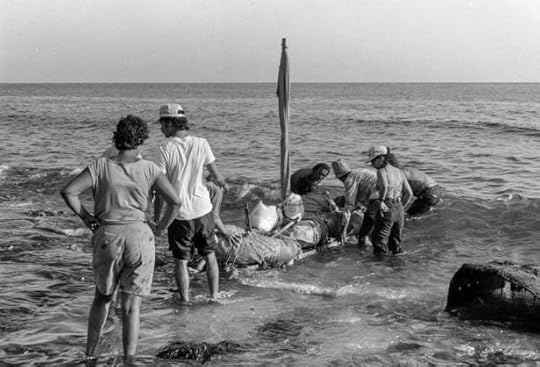
Since 2014, agents along a particular 171-mile stretch of U.S.-Mexico border have seen a dramatic rise in Cuban migrants. Hundreds arrive each day, sometimes 600 in one weekend. They come because of a 50-year-old, Cold War-era law that, unlike for almost any other migrant group, allows them to stay.
Beginning almost immediately after Fidel Castro’s 1959 Marxist revolution, the United States welcomed Cuban defectors. And for a while Cuba let them leave. “Freedom Flights” from 1965 to 1973 carried some 300,000 Cubans to Miami, and in that time Congress passed the Cuban Adjustment Act, which presumed anyone leaving Castro’s country was a political refugee. For decades, and through many immigration overhauls, that law has stuck, allowing Cubans who made it onto U.S. soil refuge, and a one-year fast-track to legal status.
Until recently, leaving Cuba wasn’t easy. If Cubans wanted to travel abroad, they needed a permit from the government, as well as an invitation from the foreign country they wished to visit. The image of Cuban migration has historically been of sunburned people on rafts riding ocean currents to Florida. Through much of the 1990s, that was true. It even prompted the “wet-foot, dry-foot” policy.
But the Cuban immigration of late has been on airplanes and in buses through Central America. In 2013, the only requirement to leave became a valid passport. Ecuador has some of the most open immigration policies in the world, and a tourist visa isn’t required for visits less than 90 days. So when Cuba eased its own travel restrictions, people boarded flights to Ecuador, then crossed Colombia and into Central America, traveling well-established routes to the U.S. (although there have been some hiccups, mostly caused by Nicaragua). The migrants cross in Arizona and California, as well, but two-thirds have ended up at the Laredo border sector in Texas, where they were allowed to walk into the U.S.
The easy admission has at times angered other Latin American migrants. Some 43,000 unaccompanied minors and tens of thousands of families fleeing gang violence tried to cross the U.S.-Mexico border in 2014. When they arrived, many were locked in detention centers for months. Most would be ordered deported, and recently Immigration and Customs Enforcement has raided the homes of migrants across the country.
Cuban migrants coming to the U.S. doubled from 2013 to 2014, reaching 24,000. Last fiscal year it nearly doubled again, breaking 43,000. That rise dovetailed with Obama’s 2014 announcement that he and Cuban president Raul Castro planned to normalize relations between the two countries. In January of 2015, Obama relaxed trade and travel restrictions. Then in August of that year, the U.S. raised its flag for the first time since 1961 above its embassy in Havana.
In the latest show of the cozying relations, Obama announced Thursday he will travel to Cuba next month—though he said the U.S. remained concerned by Cuba’s human rights record and he will raise that record directly with Cuban officials. No other sitting president has done that since 1928. Earlier in the week, the administration also signed an agreement to allow commercial flights to the island, and Cuba returned a long-lost U.S. missile.
As the two countries continue to become more comfortable with one another, there’ll be a lot of reevaluating past decisions. One may be the Cuban Adjustment Act. In the run-up to passing an ultimately unsuccessful immigration bill in 2013, Marco Rubio, whose own parents came from Cuba, said the blanket-style protection provided by the law should be re-examined. Rubio told The Tampa Bay Times he wasn’t “sure we’re going to be able to avoid, as part of any comprehensive approach to immigration, a conversation about the Cuban Adjustment Act.”

The Political Aftermath of Ankara’s Terrorist Attack
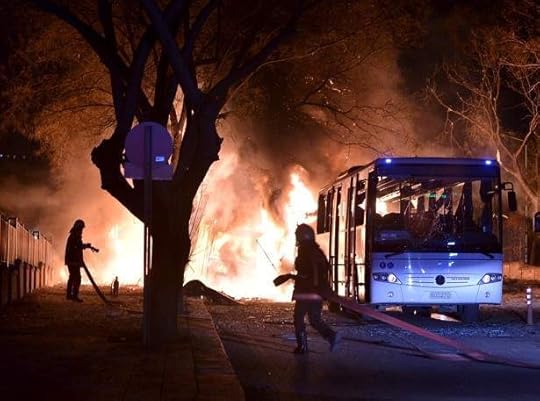
The Turkish government has blamed two Kurdish groups for a bomb attack in the country’s capital that killed 28 people, including one the United States considers an ally in the fight against the Islamic State.
Turkish Prime Minister Ahmet Davutoğlu said Wednesday the Turkey-based Kurdistan Workers Party, or PKK, worked with a wing of the Syria-based Democratic Union Party, or PYD, to carry out Wednesday’s attack.
At least 28 people were killed and 61 were injured when a car bomb detonated near military buses stopped at traffic lights in Ankara’s administrative hub. At least 20 of those killed were military personnel. Turkish leaders said they have identified the perpetrator of the attack as a Syrian national. The PYD and YPG denied any involvement in the attack.
Davutoğlu criticized the U.S. for supporting Kurdish militias in the mission against the Islamic State. The U.S. backs the PYD’s armed militia, the People’s Defense Units, or YPG, which is battling the Islamic State in Syria.
“We can’t excuse any NATO ally, including the U.S.” of having “links with a terrorist organization that strikes us in the heart of Turkey,” Davutoğlu said in a televised speech Wednesday.
Turkey considers the PYD and YPG affiliates of the PKK, which the government considers a terrorist organization. The Turkish government and the PKK, the Kurdish separatist group, have been locked in a decades-long armed conflict in the country’s southeast, punctuated only by a handful of failed cease-fires.
Davutoğlu’s comments reflect increasingly strained relations between Washington and Ankara, two longtime allies. Both the U.S. and Turkey believe the resolution to Syria’s five-year-long civil war lies in removing the country’s president, Bashar al-Assad, from power. Both sides arm and train Syrian rebels against Assad’s government. And both are part of the broad coalition fighting the Islamic State. But while the U.S., like Turkey, lists the PKK as a terrorist organization, it has dismissed Turkey’s requests that the U.S. cut off its support from the YPG, calling the group “an effective fighting force.”
To make matters worse, in recent weeks, U.S.-backed YPG fighters have seized territory from Syrian rebels who are facing a major Syrian-army offensive, supported by Russian airstrikes, near Aleppo, just south of the Turkish border. Turkey, fearful such action might stoke separatist sentiment among Turkish Kurds, has responded by firing artillery shells at the militia across the border. (In an interesting twist, Syria’s representative to the United Nations said this week, after Turkey began shelling PYD positions in northern Syria, that the Syrian government supports PYD, too.)
The U.S. has called on the YPG and the Turkish military to stop these military operations in northern Syria, a move that has angered Turkish President Recep Tayyip Erdoğan.
“At the moment, I have difficulty in understanding America, which still hasn’t called or still cannot call the PYD and the YPG as terrorists and which says, ‘Our support for the YPG will continue,’” Erdogan said Wednesday.
Turkey vowed retaliation for the Ankara attack, launching airstrikes against PKK bases in northern Iraq, where Kurds have a stronghold in that country’s autonomous Kurdish region, hours after the Ankara explosion. Turkish cities have repeatedly been the targets of terrorist attacks in recent months, but most have been attributed to the Islamic State, which controls large parts of Iraq and Syria. Washington and Ankara have been split on the use of Syrian Kurdish militias against the Islamic State since the terrorist group emerged as a global threat in 2014. They have publicly maintained an image of harmony—administrations working toward the same end—but this week’s attack, coupled with intensified fighting along the Turkey-Syria border, threatens to further strain their working relationship.

Is Britain No Longer a Nation of Tea Drinkers?
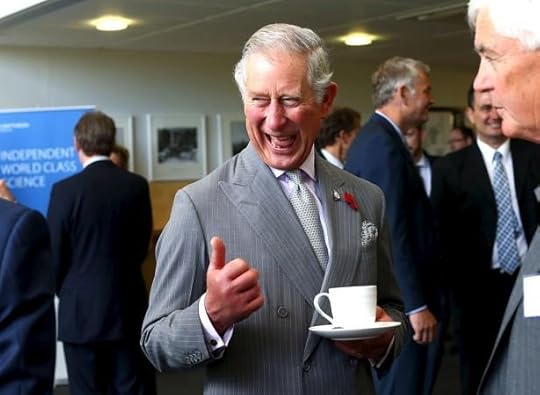
Almost as old as England itself (or at least since the 17th century) is the caricature of the tea-obsessed Brit. According to the United Kingdom Tea & Infusions Association, tea’s stranglehold over the British imagination is an actual matter of fact:
A cup of tea is a vital part of everyday life for the majority of people in modern Britain—in fact tea is so integral to our routine, that it is difficult to imagine life without it!
Oh, but those cruel winds of change seem to be brewing. A study of consumer purchases mixed with decades of data from National Food Surveys reveal that tea consumption has fallen steadily over the course of two generations.
Since 1974, the BBC reports, weekly purchases of tea have “experienced almost a two-thirds fall” from 68 grams (2.4 ounces) per household per week to just 25 grams (0.88 ounces). As Sky notes, that drop suggests that “Britons are drinking on average just eight cups of tea a week today, down from 23 in 1974.”
So what gives? There are many factors that could help explain the decline. First and foremost is the rise of coffee culture. The difference between culture and consumption is an important distinction here because while coffee isn’t being consumed in wild quantities in the United Kingdom—each day, fewer than .4 cups per capita are drunk—coffee shops have become a trend, even replacing the storied pub as the preferred third place.
As one analyst told The Telegraph, “[T]he way in which coffee is being consumed has changed with people now visiting coffee shops where they might previously have consumed instant coffee at home or in the workplace.”
If one associates coffee with a new social paradigm, tea is often linked to sweets/biscuits/cakes, which have also fallen out of favor as new data show British consumers have tried to move away from sugar and bread toward healthier trends. One telling fact from The Telegraph’s report: “Volume sales of sweet biscuits fell from 451m kg in 2009 to an estimated 413m kg [in 2014].”
Another likely factor is a yen for something different, even just a departure from traditional tea. A sales analysis by The Guardian last August offered that while traditional tea fell 6 percent in the past five years, sales of less traditional teas (fruit, herbal, specialty, green) grew steadily from 2012 to 2014.
Of course, one place where tea consumption is not declining may be a surprise: the United States. As Roberto Ferdman wrote in The Washington Post in 2014, “The U.S. market for tea has more than quadrupled during the past twenty-plus years—from just under $2 billion in 1990 to just over $10 billion [in 2013].”

A Social-Media Shutdown in Uganda’s Presidential Election
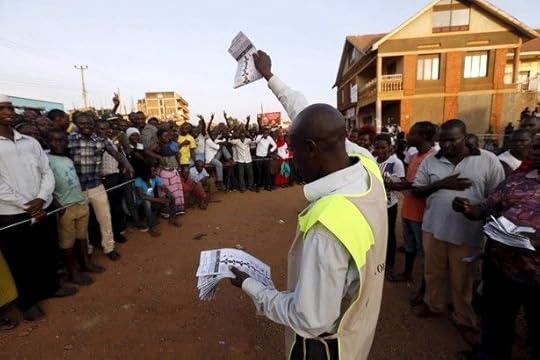
Ugandans voted Thursday in presidential and parliamentary elections already alleged to be fraudulent, amid a social-media blackout that hit sites such as Twitter, Facebook, and WhatsApp.
Ugandans used VPNs, or virtual private networks, to bypass the blockages and tweet about the shutdown. Amama Mbabazi, one of seven candidates challenging Yoweri Museveni’s 30-year presidency, tweeted a VPN to his 138,000 followers.
The Guardian reported that Godfrey Mutabazi, the executive director of Uganda Communications Commission (UCC), said the shutdown was a “security matter.” He said the UCC initiated a 24-hour social-media shutdown upon instructions from Uganda’s Electoral Commission. The Election Commission, in turn, deferred the issue to the UCC. The Ugandan news site The Observer reports the shutdown will be lifted after the UCC assesses “the security situation.”
In an interview with Ugandan media, Museveni echoed what he called the security risk in social-media access during the election.
“There must be steps taken for security to stop so many creating trouble,” he said. “It’s temporary. It will go away. Because some people misuse those pathways. You know how they misuse them, telling lies. If you want a right, then use it properly.”
The temporary shutdown did not stop Ugandans from tweeting about other election-related issues. According to The Observer, polling stations were supposed to open at 7 a.m., but voting did not begin until hours later. Long lines formed at several voting sites as people waited for hours for ballot papers to be delivered. Officials cancelled voting in two stations in Uganda’s capital, Kampala, after conflicts over discontent with delays and lack of voting materials escalated. NBS Television reported tear gas was fired at one polling station in the capital.
There are allegations of unsealed voting and stuffed ballot boxes in the Twitter hashtag #UgandaDecides.
Kizza Besigye, a former physician to Museveni and the candidate considered to be his main opponent, said the election “had no chance of being fair and free.”
The Election Commission extended voting hours at some polling stations to make up for the morning’s delays. Officials began counting votes at other sites Thursday afternoon, ahead of election results expected Saturday.

The Life of Pablo and the Terror of Monogamy
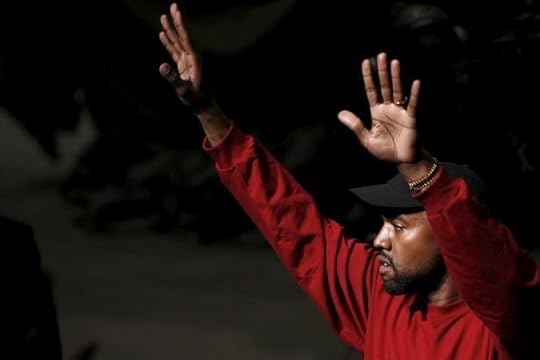
Of all the strange things Kanye West has tweeted around the occasion of his new album The Life of Pablo, the strangest might be this: “Pablo is full of joy and love because I was able to create.”
Full of joy and love? When I listen to Pablo, I hear wide-eyed fear and confusion. I hear strain. I hear a yearning for joy and love. The real thing is only rarely present. This isn’t a complaint, per se. Kanye West has made some uplifting music over the years, but his most classic songs usually involve large amounts of conflict and doubt, the same emotions that are the bedrock of Pablo. As you might imagine, such bedrock is not firm. The album contains the least consistent music West has ever put out, and that’s both a good and bad thing for the listener. Even when it’s frustrating, there’s drama in how it wobbles.
West has also called Pablo “a gospel album with a lot of cursing on it,” which is correct. It opens with the sound of a young girl shouting away the devil; there are church choirs throughout; at one point, West devotes a full track to a woman’s faith testimonial. It should be noted, though, that this is not gospel as celebration nor as evangelism. It’s gospel as desperation. This is his first album since getting married, becoming a father of two, releasing a fashion line, and receiving a few lifetime-achievement awards and honorary degrees. Yet it repeatedly pleads for strength in a time of personal strife. “I’m tryna keep my faith,” goes the refrain of the stunning, upwardly lurching opener “Ultra Light Beams,” the churchiest thing here.
This struggle has been a long time coming. After gaining fame with a trilogy of hilarious and smart pop-rap albums that each reshaped the sound of radio, West’s music has defied categorization but has shared one preoccupation: his terror of monogamy. The end of his engagement to Alexis Phifer helped fuel the auto-tuned mourning of 808s & Heartbreak in 2008. The grand fictions of My Beautiful Dark Twisted Fantasy included a dream about marrying a porn star who let him sleep with whomever he wanted, and a nightmare about getting ensnared in a child-custody battle. Watch the Throne featured him bragging having sex with a stranger in a bathroom stall as Jay Z talked about his fidelity to Beyoncé; on the opener, West scowled “love is cursed by monogamy.”
Then came Yeezus, where frightening noise and gothic undertones accompanied the most lewd and callous lyrics of his career. Only on that album’s final track did the psychosexual frightfest end as West rapped about settling into a committed relationship with someone uninterested in threesomes. That song, “Bound 2,” generated the famous music video of West being straddled by his then-fiancée Kim Kardashian on a motorcycle in front of a Lisa Frank-style sunset. It sounded a lot like gospel.
Pablo then, necessarily addresses the question of how Kanye’s feeling as a bound man. The answer seems to be that it’s making him feel horny. There’s lots of dirty talk here, but it’s confined to speculative boasts, memories, and references to “wifey.” The now-infamous admission that he feels like he and Taylor Swift “might still have sex” is less about Swift than about West’s own delusions—that “still” is the sign of someone leaving doors open in his mind that he knows should be closed by now (though Swift is right to say that the contention he made her famous is rooted in sexism, as many West statements are). “Freestyle 4” uses a slasher-film arrangement as West imagines turning the party he’s at into an orgy. And then there’s “FML,” the great somber reckoning, where Kanye finally makes explicit the push-pull that has ruled the album: resisting the temptation to “fuck my life up” by cheating on Kim.
His own voice on Pablo often plays a fascinatingly minor role, purposefully drowned out by samples and guests. “Father Stretch My Hands Pt. 1,” for example, begins with West considering a model’s bleached body parts, but before it becomes clear whether he’s referring to an affair, a fantasy, a memory, or his own wife, he shuts up: “She get under your skin if you let her / She get under your skin if you … uh / I don’t even want to talk about it.” That’s right—Kanye West censors himself. In “Pt. 2,” the song melts into a lengthy sample of the rapper Desiigner’s still-rising hit “Panda,” a particularly delectable entry in the canon of songs about having multiple cars and multiple girlfriends. The moment at first feels inexplicable: Couldn’t he just get his labelmate to write a new verse? But then it sinks in that West might be grabbing this other guy’s song to show how he’s now gawking at the swaggering single-rapper lifestyle from afar.
West portrays his attempts at restraint and a righteous life as pushing him into insanity.
It’s not that West isn’t ever swaggering, himself. “Famous,” the closest thing to potential radio pop that Pablo has, features Rihanna interpolating Nina Simone for a massive hook and eventually breaks into a gleeful sample of Sister Nancy’s “Bam Bam” after West lay down a series of brags. But even then, there are flashes of dreadful reality to cause vertigo—e.g. “I just copped a jet to fly over personal debt” ($53 million, he later clarified on Twitter). The other would-be bangers seem to carry some ambivalence with them, too. “Highlights,” featuring West talking sexcapades and Young Thug wailing over a skeletal but infectious rhythm, is preceded by “Low Lights,” a two-minute testimony about wishing God would heal unbearable pain. Another bright spot, “Waves,” might be meant—in name and in its glorious, pulsating sound—to approximate the feeling of an MDMA high, among other things. In the chorus, Chris Brown sings “waves don’t die”—one of many times that the album pretends that momentary pleasures are permanent.
What about the one joy in West’s life that is now supposed to be forever: family? He brags about the West-Kardashian-Jenner clan in terms of their fame at one point, saying they’re the new Jacksons. But there are surprisingly few odes to, say, the supreme hotness of Kim or the cuteness of his kids. The gorgeous and beguiling “Wolves” is about their bond, but it’s dead serious, built on a spooky vocal line from the Pulitzer-winning composer Caroline Shaw and closing with Frank Ocean singing desolately about “light with no heat.” That line is bittersweet, perhaps an acknowledgment of how passions eventually dim even as deeper ties remain. The album finishes with a mysterious, roiling house track called “Fade”; the few lyrics on it communicate ache, fear, and paranoia as a sampled voice repeats “your love is fading.” It doesn’t really sound like a happy ending.
* * *
The struggle of a man to tamp down his lust and ambition in the name of family is, of course, one of the most over-documented struggles of 20th-century art. And the fact that West addresses it by fixating on faith—the original album title was So Help Me God—means he’s partaking in the same tradition that has helped keep religion relevant for thousands of years. But what makes Pablo fascinating is how West portrays his attempts at restraint and a righteous life as pushing him into insanity. Just look at the addled album art, which haphazardly juxtaposes his parents’ wedding photo next to the ass of an Instagram model and asks “WHICH / ONE” over and over (the question might also refer to the various Pablos who West could emulate—Picasso, Escobar, or the Biblical Paul, all of whom are name-checked in a chilling tape purported to contain his backstage freakout at SNL). West’s persona at the moment, on the album and off of it, creates the impression of someone straining to keep himself together as he tries to honor the commitments he’s made—release dates, wedding vows, debts. The question of whether he’s actually losing his grip or is just acting like it for art is part of Pablo’s queasy power, and should force even more discussions about whether and how to separate art and artist.
A few songs skip that discussion, though, by directly broaching the idea that West is totally nuts. Asking listeners to “name one genius who isn’t crazy” as he does on “Feedback” is one thing; copping to going off Lexapro and causing an incident on vacation on “FML” is another, the kind of line that will feed otherwise off-limits speculation about his mental health. During the stupendous Kendrick Lamar collaboration “No More Parties in L.A.,” West raps with an intensity that feels chemical; you keep expecting him to finish up, but then he veers on to some other tangent, and suddenly we’re at a six-minute runtime. In a few places on the album, his voice is hoarse; in others, he shrieks in a way that will startle anyone hearing it for the first time.
The music itself reflects the idea of mania in the way that the songs jump around, often shirking the normal expectations of verse/chorus/verse/chorus, not to mention rhythmic consistency or the development of momentum. But the actual sound of the thing too, I think, evokes the idea of someone who exists only at the level of all the way up or all the way down. There are high, spindly melodies and shimmering synthesizer tones; there are low, creeping bass lines; there’s not much in the middle of the range. Previous West releases, even when notionally “minimalist” like on Yeezus or 808s, still felt like they filled the ear. Pablo doesn’t. It’s a painting that’s faded except for a couple of very vivid colors.
A lot of listeners have theorized that Pablo sounds this way because it was only hastily completed, if at all (West has hinted there might be yet another version coming). There’s definitely an unfinished quality to the songwriting that prevents many of these tracks from ranking in the upper tier of West’s catalogue. Every time I hear both portions of “Father Stretch My Hands,” I think about the epic masterpiece that could have been if West had put a little more work into making the various parts cohere. But it’s also very possible that West wanted the album to feel this rickety. It fits his scattered, frantic performance in lyrics and on social media. It fits the idea of trying and not quite succeeding to embrace the comfort and companionship you’ve worked to achieve. And the messiness makes the transcendent moments feel all the more precious.
If West has a big message in his public statements and in his music, it’s about the desire for total freedom. His songs used to plead for women to let him act on every sexual instinct. Now, he pleads for Mark Zuckerberg to bail him out so he can act on every artistic whim. In either case, he’s asking for more and more license. But the twist of Pablo is that he is no longer, as he puts it on “FML,” “living without limits.” Christianity promises eternal freedom, but only after curtailing your choices in the mortal world. Could West ever exercise such restraint? He has taken a vow to. Again and again on Pablo, West says that he wishes to stick to it. But like many great people of faith, he admits to doubt.

The Angry Debate Over Sedition in India
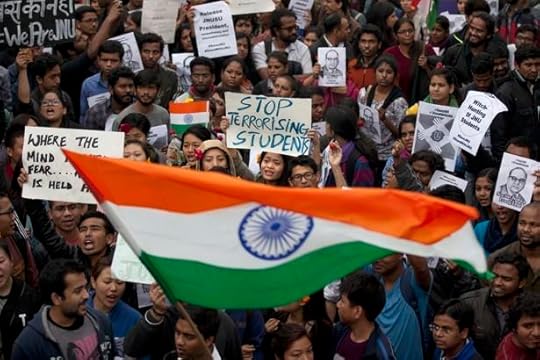
India’s Supreme Court has agreed to hear a bail plea from a student-body leader at the center of a heated debate over sedition.
Kanhaiya Kumar, the 28-year-old head of the student union at the prestigious Jawaharlal Nehru University (JNU), in his petition to the Supreme Court, called an alleged attack on him on Wednesday during an appearance at a lower court an “exceptional and unprecedented breakdown of justice delivery mechanism and administration of justice.” And, he said, his fundamental rights, guaranteed by the Indian Constitution, had been threatened.
“I am a student of Jawaharlal Nehru University and not some hardened criminal,” Kumar said in his petition, which came a day after he was remanded to police custody until March 2.
The Supreme Court apparently agreed, with one justice acknowledging “something extraordinary is going on in this country.”
Something indeed is going on across India. Kumar’s supporters, as well as his detractors, have staged protests across the country, taken to social media, written columns, and shouted over one another on television to amplify their views, which at their core come down to this question: Do free-speech rights extend to views that are seen as anti-national?
What’s the issue?
As we reported last week, Kumar was arrested in connection with an event held on the JNU campus on February 9 to mark the third anniversary of the execution of Afzal Guru. Guru, who was from Kashmir, was sentenced to death in connection with a deadly attack by militants on India’s Parliament in 2001. Debate over Guru’s guilt has swirled ever since his arrest.
The JNU protests, news reports say, involved slogans in praise of Guru and called for the breakup of India into smaller pieces. These allegations, which have also been leveled against Kumar, have enraged many Indians. But it’s unclear whether such words were actually uttered. There are conflicting videos purporting to show entirely contradictory events. (You can watch a video of Kumar shouting what his critics call anti-national slogans here, while this video, which also claims authenticity and comprehensiveness, says he did not.) The debate is complicated by the fact that Indians enjoy freedom of speech, but with restrictions. Cases like this come down to the courts.
Following complaints to the police after the JNU rally from rival student groups, Kumar was arrested last week and charged with Sections 124A (sedition) and 120B (criminal conspiracy) of the Indian Penal Code. Police are seeking others in connection with the case. They too have been charged with sedition and criminal conspiracy.
Why are the remarks controversial?
The issue is a sensitive one in India, which since independence from Britain in 1947, has quelled several separatist rebellions in various parts of the country. One of those places is Kashmir, which lies at the heart of the current debate.
Kashmir occupies a unique place in Indian public consciousness. India, while predominantly Hindu, is officially secular. Kashmir is the country’s only Muslim-majority state. It is also the scene of a sometimes-bloody separatist rebellion. Part of Kashmir is administered by neighboring Pakistan, a Muslim country. Both India and Pakistan claim Kashmir in its entirety and have fought two wars over it, have come close to a third one, and have been engaged in countless border skirmishes over the region.
Indeed, the sedition law was previously used to charge three Kashmiri students who cheered for Pakistan during a cricket match between India and its neighbor. The charges were eventually dropped.
What is the law?
The sedition law, which was enacted in 1860, states:
Whoever by words, either spoken or written, or by signs, or by visible representation, or otherwise, brings or attempts to bring into hatred or contempt, or excites or attempts to excite disaffection towards, the Government established by law in India, a shall be punished with imprisonment for life, to which fine may be added, or with imprisonment which may extend to three years, to which fine may be added, or with fine.
The colonial-era law has been used in recent high-profile cases, including against the Kashmiri students; against Aseem Trivedi, a cartoonist who was arrested in 2012 after altering the three lions, India’s national emblem, to lampoon corruption; Arundhati Roy, the Booker Prize-winning novelist and social activist who was accused of making an anti-national speech in 2010 when she called for Kashmir’s independence; and Binayak Sen, a social activist accused of helping India’s Maoist rebellion. But the charges have rarely stood up to judicial scrutiny, and have eventually been dropped.
Critics say the sedition law stifles free speech—especially so after Kumar’s arrest. No less a personage than Mohandas Gandhi, whom Indians regard as the father of the nation, described Section 124A thusly when we was charged by the British under the act in 1922:
Section 124 A, under which I am happily charged, is perhaps the prince among the political sections of the Indian Penal Code designed to suppress the liberty of the citizen. Affection cannot be manufactured or regulated by law. If one has no affection for a person or system, one should be free to give the fullest expression to his disaffection, so long as he does not contemplate, promote, or incite to violence.
Kumar’s critics would argue that he and his supporters did, in fact, “contemplate, promote, [and] incite … violence” though he has denied those claims, saying he eschews violence and believes in India’s Constitution.
A matter of left vs. right?
At first glance, the debate over Kumar’s alleged remarks breaks down in a simple left-right binary. JNU has long been a bastion of left-wing, especially Communist Party, politics. The complaint against Kumar was filed by members of another student group at JNU. This one, known by its initials ABVP, is affiliated with India’s Hindu right wing. Recent events at JNU have mirrored India’s rightward tilt. Last September, the ABVP won student elections at JNU after 14 years. India itself elected its Hindu nationalist BJP government in 2014 after a decade of rule by the centrist Congress Party-led government.
But the events at JNU serve as a microcosm for much of the debate that’s occurring across India—and has been occurring for some time. Some of the previous sedition cases, including against Roy, the novelist, and Sen, the social activist, were filed during the Congress Party’s rule. Indeed, the previous time a JNU student was charged with sedition in India was in the 1970s, when then-Prime Minister Indira Gandhi of the Congress Party imposed a state of emergency. The era witnessed a curtailing of civil liberties, mass arrests, and the crushing of political dissent. Many critics of India’s BJP government say those conditions are slowly returning along with intolerance of dissenting views. The BJP’s supporters dismiss those claims, but some of its ministers have been vocal about where the limits of free speech lie.
“If anyone raises anti-India slogans, tries to raise questions on country’s unity and integrity, they will not be spared,” Rajnath Singh, a BJP lawmaker who serves as India’s home minister, said after Kumar’s arrest last week. “Stringent action will be taken against them.”

Is This Finally It for Jeb Bush?
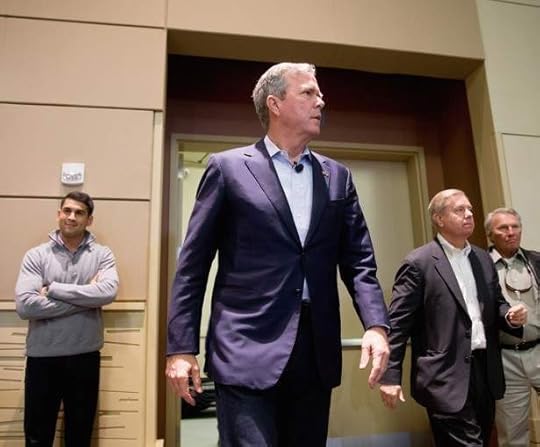
This is not the first time that the pundits have declared a Jeb Bush campaign deathwatch, but the vital signs are getting weaker and weaker, and South Carolina may provide the final blow.
The latest bad news came on Wednesday, when popular Governor Nikki Haley endorsed Senator Marco Rubio. Her backing gives Rubio another boost in his quest to consolidate the backing of the Republican establishment against Donald Trump and Ted Cruz, and it makes it even harder for Bush to do that. Bush had been angling for Haley’s endorsement too, and on Tuesday—in a moment of candor he may regret now, told NBC, “She is the probably the most meaningful endorsement if there is, if she is going to give an endorsement it would be the most powerful meaningful one in the state.”
Related Story
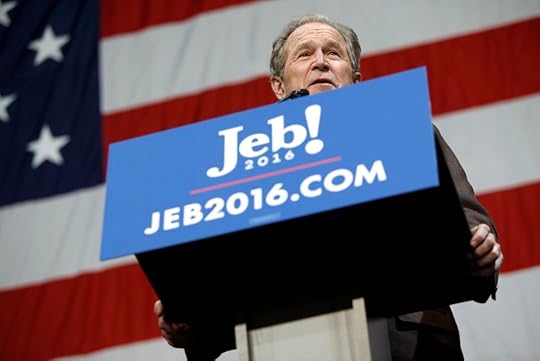
A little bit too much honesty was Bush’s theme on Wednesday. After news of the Haley endorsement leaked, he lashed out during a trail stop. “It’s all decided, apparently. The pundits have already figured it out. We don’t have to go vote. I should stop campaigning maybe, huh? It’s all done,” he sniped, then recovered, adding: “That's not how democracy works.”
That recovery was a little late: In reaching for pugnacious underdog, Bush had instead come across as a peevish and petulant. Besides, he’s not just fighting off questions from pundits, but also from supporters.
“During the question and answer period following an unusually hot-tempered 30-minute rendition of his stump speech, Bush received unsolicited advice from three audience members in succession, each encouraging him to be tougher,” Politico’s Eli Stokols reports. “It did not improve his mood, which was noticeably tense from the get-go.”
As Saturday’s crucial South Carolina primary draws near, Bush is pulling out every remaining trick he’s got. There’s the “hot-tempered” speech, a somewhat more fiery version of his low-key, wonky presentation throughout the campaign, the one that earned him the nearly fatal “low-energy” label from Donald Trump. After months of keeping George W. Bush in mothballs, worried his still-toxic reputation would be a drag on Jeb’s chances, the campaign finally brought the former president out for an event on Monday in North Charleston. The candidate even dropped his trademark rimless glasses in favor of contact lenses, a move that he insisted wasn’t about campaign optics—so to speak—even as he admitted that he’d never worn contacts before. (Members of the Bush family have long struggled with “the vision thing.”)
How much benefit did George W.’s appearance do for his brother? As I reported at the event, it mostly served to show just how much better a politician the former president is. Voter after voter at the rally told me they admired the Bush family, and even believed that Jeb might be a pretty good president. But that didn’t mean they were supporting him. They were worried about the “dynasty” issue. They were worried about his low energy. They just thought that Marco Rubio was a better bet. The reasons varied from person to person, but the takeaway was clear: Thanks—truly, sincerely, thanks!—but no thanks.
It’s been possible for Jeb Bush to waive off some of these critiques in the past. There was no reason for him to leave before the Iowa caucuses, not with his huge war chest. And sure, after the Iowa caucus things looked bad, but then again it was never going to be his state, right? Then came New Hampshire, where he ended up in fourth place—a finish that might have spelled doom if it hadn’t come in ahead of Marco Rubio, giving Bush a slightly better argument that he could claim the establishment mantle.
That’s not really an option anymore. Polls in South Carolina show Bush still a solid distance behind a recovered Rubio (though still ahead of John Kasich, who hasn’t managed to capitalize on his strong second-place showing in New Hampshire). If he ends up fourth there, what justification will he have for continuing? He will have had poor results in the midwest, the northeast, and the south. It will show that attacks by his super PAC on Rubio haven’t vaulted their man ahead.
The influential Washington tip sheet Playbook blared Thursday morning, “GOP RACE NARROWING to 3.” It is easy, and probably correct, to insist that Playbook’s author, Mike Allen, is simply the arbiter and amplifier of Beltway conventional wisdom, but that happens to be Bush’s base. The justification for his campaign, especially at this stage, is his ability to rally and speak for Beltway Republicans. If he can’t do that, and he can’t win a primary either, why bother?

Netflix’s Love: A Dark Romance About Terrible People

Have you ever cringed while watching the difficult romantic melodramas of the millennials on Girls and thought, “I’d love to feel this uncomfortable for a whole day, as opposed to just a Sunday night”? Then Netflix’s new 10-episode series Love might just be for you. Created by Judd Apatow, the comedy centers on a relationship between two 30-something basket cases, but you have to sit through a full 40 minutes of their emotional misery before they even meet one another.
Related Story

Chelsea Does: An Awkward Marriage of Documentary and Reality TV
Love is the latest reminder that the Netflix model of dropping whole shows at once can lead to stories with a self-indulgent disregard for pacing. Shows like Bloodline and Sense8 had a tremendous amount of dramatic potential, but they wasted hours unpacking the background of their large ensembles rather than getting the plot moving. Love takes that same approach, but applies it to the awkward fumblings between two lost souls in Los Angeles (played by Gillian Jacobs and Paul Rust) for a ride that’s initially frustrating, but eventually rewarding. As a rom-com, it’s perhaps a little too light on both the “rom”and the “com.” But like other excellent half-hour dramedies about the pains of growing up and settling down (Girls, You’re the Worst), Love is at its best when it digs deeper into its protagonists’ biggest (and most repelling) flaws.
Love was created by the married couple Lesley Arfin (who wrote for the first season of Girls) and Rust, along with Apatow, who’s long excelled at mixing autobiographical material into his slice-of-life comedies. At its start, both Mickey and Gus (Rust) are in the middle of disintegrating relationships: Mickey with a drunken loser well out of her league, Gus with a long-term partner who unexpectedly and abruptly leaves him.
The show wastes far too much time digging into this history, which could have been packed into a quick overheard conversation. It’s not too hard, in other words, to ascertain that Mickey is overly reliant on mood-altering substances of every kind, and that Gus is pathologically afraid of risk-taking, but the first two extended-length episodes dwell endlessly on those topics without adding the alleviating effects of actual humor. Shows like Girls and You’re the Worst are much more sitcom-inspired, mixing in more madcap comedy and joke-telling to cover for their low-stakes plotting. Love seems much more inspired by weighty dramas, even if it can’t conjure up much on its own.
The show’s first big note doesn’t arrive until the end of the second episode, when after a confrontation with his ex-girlfriend, Gus angrily throws his DVD collection out of Mickey’s moving car one disc at a time—a clean emotional break in the form of symbolically desecrating the memory of every movie he bought and watched with his girlfriend. It’s hilarious, it’s weird, and it mixes the personal with the laugh-out-loud funny. Love is filled with clever little moments like this, but there’s a lot of slower material to endure on the way there.
For the show to work, viewers will have to buy into these characters—which is a challenge since Arfin, Rust, and Apatow aren’t going for instantly likable. Gus is the kind of wimpy nice guy who finds himself being propositioned for a threesome (in the first episode) and can’t help but awkwardly shrug the whole time (he’s like a sort of overgrown Superbad-era Michael Cera who hasn’t learned anything about human interaction in the intervening 15 years). Mickey is so emotionally detached that she basically delivers every line in a monotone while dragging on a joint. (Jacobs’s portrayal of the self-destructive Mickey—a clear analogue for Arfin—is quite the tour de force).
And yet, unlike with lesser shows, Mickey’s addictions aren’t window dressing for her character, but dark issues that the show eventually works through with authenticity and grace. One episode, centered around a long bender she goes on with the comedian Andy Dick (playing himself) is almost harrowing in its honesty, but it’s beautifully realized. It’s moments like these that help justify the more aimless wandering—but Love makes you work to get to them.

The Last Time a U.S. President Visited Cuba
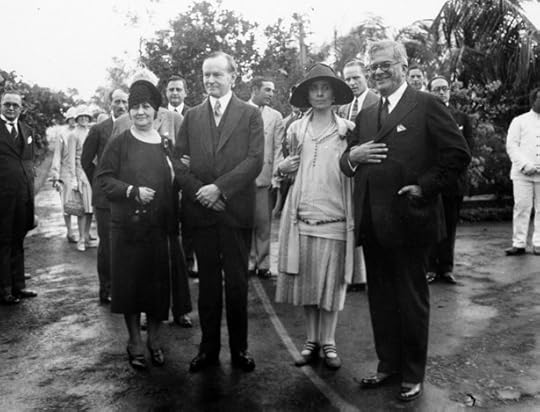
Updated on February 18 at 9:12 a.m.
President Obama announced on Twitter that he will visit Cuba next month “to advance our progress and efforts that can improve the lives of the Cuban people.” The visit would cap the historic announcement by Obama and Cuban President Raul Castro in December 2014 that the two Cold War-era rivals would take steps to normalize relations.
Obama would be the first sitting U.S. president—Jimmy Carter visited in 2011—to visit Cuba since Calvin Coolidge attended the Pan American Conference in Havana in January 1928.
It was a time when the U.S. controlled Cuban politics and the Cuban economy, according to the Miller Center at the University of Virginia.
U.S. policy toward Cuba during that period was governed by the Platt Amendment, which, in exchange for an end to the U.S. military occupation of the island, imposed a set of conditions on the Cuban government. These gave the U.S. the right to intervene unilaterally in Cuban affairs and included a clause that eventually led to the perpetual lease of Guantanamo Bay, which is home to a U.S. naval base and a detention facility for suspected terrorists.
“So embittered were most Latin American leaders over America's policies that the republics of the Western Hemisphere assembled for their triennial conference in Havana, Cuba, in 1928 eager to demand changes in American conduct,” the Miller Center notes.
It was under these circumstances that Coolidge visited Havana. The trip was the first foreign outing for the president, who was seemingly uninterested in foreign policy, and was an attempt to extend an olive branch toward a Latin America that was smarting at U.S. policy toward the region.
Coolidge rode the presidential railcar to Key West where he boarded the battleship USS Texas and set sail for Havana, where, as The New York Times’s account said, he was warmly welcomed. “[B]ig guns boomed salutes and a multitude of people cheered with the enthusiasm born of an intensive Latin nature,” the Times reported.
Prohibition was in effect in the U.S. at the time, and reporters accompanying Coolidge wanted to know how the president would respond to an offer of alcohol when he met with Gerardo Machado y Morales, the Cuban leader at the time. Beverly Smith, a reporter writing in the Saturday Evening Post, recalled in 1958, that a waiter carried “a big tray of delicate, crystal cocktail glasses, each sparkling to the brim with a daiquiri—rum, fresh lime juice and sugar, well shaken.”
Cal himself, of course, was the cynosure of the drama. As the tray approached from his left, he wheeled artfully to the right, seeming to admire a portrait on the wall. The tray came closer. Mr. Coolidge wheeled right another 90 degrees, pointing out to Machado the beauties of the tropical verdure. By the time he completed his 360-degree turn, the incriminating tray had passed safely beyond him. Apparently he had never seen it. His maneuver was a masterpiece of evasive action.
That artfulness continued in the president’s address to the conference, in which he called Cuba “a complete demonstration of the progress we are making” in the region.
“Thirty years ago Cuba ranked as a foreign possession, torn by revolution and devastated by hostile forces,” Coolidge said. “Such government as existed rested on military force. Today Cuba is her own sovereign. Her people are independent, free, prosperous, peaceful, and enjoying the advantages of self-government. The last important area has taken her place among the republics of the New World.”
The Miller Center notes that the conference was also notable for the remarks made by Charles Evans Hughes, Coolidge’s former secretary of state who served as the president’s special envoy. His “tour de force of a speech … persuaded the delegates to refrain from passing a strong anti-U.S. resolution,” the center notes.
Coolidge’s visit paved the way for a policy that opposed direct military intervention in Latin America. It reflected, in the words of the Miller Center, “a dawning awareness of the need for change, which would finally come when President Franklin Roosevelt announced a ‘Good Neighbor Policy’ of nonintervention in 1933.”
In 1959, a little more than three decades later, Fidel Castro and his communist rebels took power in Cuba. The U.S. severed diplomatic relations in 1961 and the next five decades were marked by acrimony. Coolidge still remains the only sitting president to visit the island.

February 17, 2016
The Pope of the Poor in Ciudad Juarez
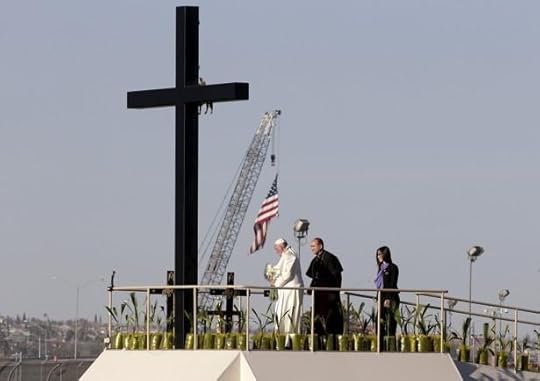
A day before Pope Francis arrived in the Mexican border city of Ciudad Juarez, a man who’d traveled from the south of the country said he saw the image of a crucified Christ in the clouds. “That kind of manifestation is rare these days,” he told El Diario, a Mexican newspaper, “even more so with the coming of the pope.” It was an auspicious sign for the faithful in a city that just five years ago was known for its gang killings and as the most murderous city in the world.
For three weeks, workers cleaned and painted streets in Juarez, and to ensure the city was on its best behavior, on Wednesday the local government suspended the sale of alcohol. The pope had originally wanted to cross the U.S.-Mexico border on his visit, an act he said would “be a beautiful gesture of brotherhood and support.” That turned out to be logistically impossible. Instead, Pope Francis dedicated much of his thoughts in Juarez to the plight of immigrants in a world increasingly shedding its borders for all but people.
“We cannot deny the humanitarian crisis which in recent years has meant migration for thousands of people, whether by train or highway or on foot, crossing hundreds of kilometers through mountains, deserts and inhospitable zones,” the pope said Wednesday. “The human tragedy that is forced migration is a global phenomenon today.”
Francis has made immigration one of the themes of his papacy. In his first official trip outside of Rome, he traveled to the migrant island of Lampedusa, off the coast of Sicily. There, he threw a wreath into the sea to memorialize the many North Africans who’d died crossing the Mediterranean in rickety wood boats, bound for Europe. “We have become used to other people’s suffering,” he said on his 2013 trip, “it doesn't concern us, it doesn't interest us, it’s none of our business.”
A year later, when he spoke to the U.S. Congress––the first reigning pope ever to do so––he said, “Let us seek for others the same possibilities which we seek for ourselves. Let us help others to grow, as we would like to be helped ourselves.”
The pope himself is the son of immigrants; his father was an Italian bookkeeper in Buenos Aires, and at the White House in 2015, he talked of the immigrant roots of his family, then added, “I am happy to be a guest in this country, which was largely built by such families.”
Juarez is one of Mexico’s best representations of why people emigrate. From 1970 to 2000, its population tripled. Factories drew low-skilled workers from across the country on the promise of jobs and money.
In Juarez, they worked 50-hour weeks that paid less than $5 a day. Little has changed since, and with a cost of living comparable to the U.S., poverty is endemic, helping Juarez become one of the deadliest cities in the world
In 2011, the city of 1.3 million saw about 10 homicides every day—many were victims of the warring drug cartels. But the casualties of this war were often the city’s poor. It’s believed nearly a quarter of Juarez’s population fled the violence––more than half to El Paso, Texas, its sister city across the Rio Grande. The city has since transformed itself: Crime has fallen dramatically, civic institutions have begun to function again, and Juarez welcomed the pope on Wednesday, on the final day of his six-day swing through Mexico.
Before he’d fly to Juarez, though, on Monday he stopped at the southernmost border, in the state of Chiapas, where, he spoke in the city of San Cristobal de las Casas, the epicenter of the 1994 Zapatista revolution. There, he told a crowd of mostly poor, indigenous people they’d been robbed by those “intoxicated by power, money and market trends.”
“Long live the pope of the poor!” the people chanted.
His trip from the the southern edge of Mexico, all the way to the north, in Ciudad Juarez, was seen by many as symbolic, a representation of the journey that many migrants make as they trek toward the U.S. In the finale of his six days in Mexico, Francis stopped at a prison in Juarez, then at college he spoke with workers and business leaders. Talking to the group, he condemned excessive capitalism.
“God will hold the slave drivers of our days accountable, and we must do everything to make sure that these situations do not happen again,” he said. “The flow of capital cannot decide the flow and life of people.”
Later, at the edge of the Rio Grande, he walked onto a newly built memorial dedicated to the immigrants who’d died crossing the border. The long structure gradually rose to a view of the U.S., with an enormous cross jutting from the floor. Francis crossed himself and prayed. Across the river in El Paso a sign read “Immigrant Lives Matter.”
His last event in Mexico was a mass at the Ciudad Juarez Fairgrounds, where more than 200,000 people from both sides of the border listened. Speaking at the Mass, Francis said: “This crisis, which can be measured in numbers and statistics, we want instead to measure with names, stories, families. They are the brothers and sisters of those expelled by poverty and violence, by drug trafficking and criminal organizations.”
The pope also paid tribute to migrant-rights activists, calling them “prophets of mercy” and the “beating heart and the accompanying feet of the Church that opens its arms and sustains.”

Atlantic Monthly Contributors's Blog
- Atlantic Monthly Contributors's profile
- 1 follower



